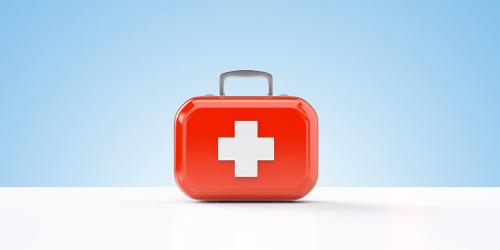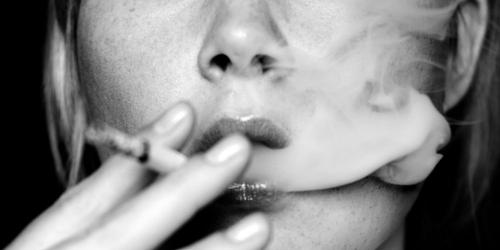During the summer, an average of 3 people die each day from drowning.
The NOYADES 2015 ** Survey counted 1,092 drownings followed by either a death (398) or a hospitalization in mainland France and the DOM-TOM between June 1 and August 30, 2015. Among them, 976 were accidental. 48% took place at sea, 26% in private and public pools, 12% in water, 12% in waterways, 3% in other places (baths, ponds ...), and have followed by 323 deaths.
One word of order therefore: vigilance!
Prevention of drowning: adults and children, all concerned
It takes just 20 cm of water for an unattended child to drown in a matter of minutes. Similarly, a child under 2 years old does not have the reflexes to struggle when he falls into the water: it flows instantly.
In France, drowning is the leading cause of death by accident in everyday life for children under 15 and every year, 15% of deaths by accidental drowning involve children under 6 years of age. the importance of learning to swim from an early age.
To prevent these tragedies, an increased and permanent surveillance is necessary.
- To the beach
The first thing you need to do when you arrive on a beach is to consult the forecast tables of the monitoring stations. Weather forecasts, currents, tides ... They are real mines of information not to be neglected.
Then we find the color of the bathing flag (which can change during the day):
Green flag: supervised swimming and no particular danger.
Orange flag: swimming dangerous but monitored.
Red flag: bathing strictly prohibited.
Then, the mission of the parents is simple: constantly monitor their children, whether they are on the beach, at the edge or in the water. Due to the heavy summer crowds, we must not rely exclusively on the vigilance of rescuers at sea, nor think that a safe swimming area preserves any danger.
If a child can not swim, it must be equipped with armbands adapted to its size, weight and age and bearing the CE mark and standard NF 13138-1). Be careful, these do not provide flawless protection against drowning, just like buoys, mattresses or inflatable boats that can quickly drift offshore.
Adults should not overestimate their abilities. A swim of 500m in open water and in the pool have nothing to do.
Finally, risky behaviors such as alcohol or narcotics before diving are obviously out of the question.
- At the swimming pool
Public swimming pools are all supervised by lifeguards. But as on the beaches, that does not prevent to have to constantly watch the children and to accompany them in the aquatic games like toboggans.
Private swimming pools must be equipped with gates, shelters or blankets to prevent access and immersion alarms to alert if a fall occurs in the pool. Outside periods of use, ladders or diving boards must be removed.
During swimming, it is necessary to always keep a pole or lifebuoy handy.
- In river
For all water activities such as canoeing, kayaking, rafting, it is essential to wear a helmet, a lifejacket and be supervised by a professional throughout their practice.
Otherwise, the safety rules that apply remain the same as those applied to the beach.
I'm drowning, what am I doing?
Do not fight against the current and the waves so as not to exhaust yourself. Calm down, stress can make the situation worse.
If possible, lie on your back (in plank position) to rest. Your airways are clear and you can breathe normally to try to call for help.
What if I see someone drowning?
Do not think of yourself as a superhero: playing the lifeguards for a day can not be improvised, especially at sea. Unless you are a minimum trained person and have real physical abilities, do not jump into a rescue. The goal is not to put yourself in danger.
The important thing is not to lose the victim of the eyes until the launching of the rescuers.
Once the victim is out of the water, call for help.
If she is breathing, place her in a lateral safety position (PLS) to prevent choking if she spits out water.
If the victim does not breathe, begin to perform a heart massage: 30 chest compressions, followed by 2 breaths. Then alternate between 30 chest compressions and 2 breaths, then continue resuscitation until help arrives if she does not resume normal breathing.
Dry drowning, a rare phenomenon that can occur after drinking the cup
Dry drowning mainly affects children, but remains extremely rare.
It can happen a few days (and even up to a week) after drinking the cup. Water descends along the bronchi and reaches the lungs that continue to fill with fluid. The victim then lacks oxygen and risks cardiac arrest.
Signs that should alert: cough, respiratory failure, blue lips, irritability, fatigue, chest pain, and vomiting.
If in doubt, it is best to go immediately to the emergency room.
What about hydrocution?
Hydrocution, or thermal shock, is the consequence of a sudden immersion in cold water after prolonged exposure to the sun.
Indeed, if there is too great a difference between body and water temperature, the blood vessels diminish during immersion, which can lead to a loss of consciousness (which can be preceded by chills, cramps, visual disturbances, itching), respiratory arrest and in the most severe cases, cardiac arrest. The main danger is then to sink and drown.
The right actions: do not do mouth-to-mouth (unless the victim has swallowed water) but a cardiac massage.
Better not to expose yourself too long if you intend to swim. Step back into the water by first wetting your arms, your neck and belly instead of immersing yourself completely and suddenly.
Thank you to Dr. Antoine André, Emergency Physician, SNSM Referent.
Sources:
* www.santepubliquefrance.fr/Accueil-Presse/All-les-communiques/A-chaque-age-et-en-- all-lieu-les-noyades- remain-a-danger-adoptez-bons-comportements
** invs.santepubliquefrance.fr/Dossiers-thematiques/Maladies-chroniques-et-traumatismes/Traumatismes/Accidents/Kays




